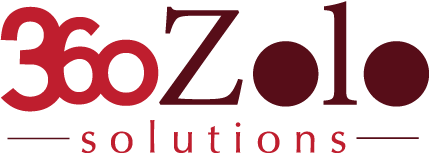Over the past year, COVID-19 has disrupted all aspects of global supply chains—perhaps no more so than in the global automotive industry.
Companies diverted capital from R&D to shore up operations and accelerated decisions to exit unprofitable markets and vehicle segments. They also prioritized supply chain transformation —accelerating a trend that had already taken root. In a survey of supply chain executives from December 2019, 32% reported plans to move operations like sourcing and inventory closer to consumers, and 24% said they expected to diversify their supply chains across countries.
When survey respondents were recontacted in May 2020, 93% said they planned to increase the resilience of their supply chains—and with good reason given the complexity of their operations and the bottom-line impact. An auto manufacturer has around 250 tier-one suppliers, proliferating to 18,000 across the full value chain . A disruption of even 30 days can put a full 3- 5% of EBITDA margin at stake.
What lessons can global companies glean from the automotive sector?
As in the area of consumer preference and product adaptation, insights from one industry can apply across others.
For starters, 2020 showed us just how interconnected manufacturing, delivery, and demand are—and how important it is to consider all three together. After lockdowns worldwide, vehicle demand started to rebound in September. But when consumers returned to dealerships, they didn’t always find what they were looking for.
Production slowdowns for OEMs and parts suppliers had postponed vehicle deliveries and new model launches. As of October 2020, vehicle inventory at U.S. dealerships reached a historic low, with 2021 models not expected to arrive until 2021. In the words of international law firm Foley & Lardner, who advises clients in the auto sector, “That is unheard of.”
Anticipate continued disruption through early 2021—and most likely beyond
At the beginning of the pandemic , automotive companies experienced temporary “manufacturing deserts,” whereby a city, region or whole country’s output substantially dries up due to lockdown conditions. Some activity has resumed. For example, GM restarted production of its Corvette model in October. Yet the pandemic itself is far from over. In late October, as new waves of cases surged, France and Germany were just two of the nations entering “lockdown 2.0.”
This isn’t great news for growth. In a mid-September forecast, global sales of light vehicles were expected to remain below 2019 levels until at least 2022, with China being the only market expected to resume moderate long-term growth.
Should other industries anticipate similar trends? An October update to The Brookings Institution’s Tracking Index for Global Economic Recovery offers a sobering prediction: “As the struggle to contain the virus continues, and with fears of a second wave mounting, the risks of substantial and long-lasting scarring effects on economies are rising.”
Rethink supply chain “business as usual”
In a stable and smooth production environment, companies can rely on just-in-time, just-enough inventories. Today, it often makes more sense to maintain higher inventory levels and rely on suppliers closer to home, which some automotive companies were doing even before the pandemic due to trade barriers and rising costs.
In other lessons from the auto industry, we also recommend that companies watch for:
- Suppliers operating at lower volumes and higher labor costs, which may spur consolidation
- Shaky consumer confidence, which may drive a preference for lower-priced products
- Evaporation of government aid, which may lower valuations and present acquisition opportunities for a more vertically integrated supply chain
Plan for continued issues with logistics
If business involves international borders and multiple modes of transit, expect logistical challenges to continue.
Consider for example the semiconductors used in automotive manufacturing. Materials are assembled, tested, driven and flown multiple times—often across countries that require customs clearance. Then the shipment is broken down into customer-specific units, with the final stage being the delivery of the materials to the customer’s factories.
COVID-19 complicates these already complex logistics. An October 29, 2020 report by AIT Logistics cited suspended routes, shifted schedules, cuts in capacity, adjusted hours, and suspension of service level guarantees across modes of transportation and supporting services. And these obstacles don’t even include customs and border considerations.
Explore investments in innovation
Finally, global companies might want to invest in supply chain technology, even in the current economic climate.
“As a learning from COVID-19 pandemic, companies have started implementing technological changes in crucial logistics functions across various internal processes covering supply chain planning, procurement, sales and operational planning and customer services,” Yahoo Finance reported.
Hitachi Global, which provides solutions to the automotive market, cited IoT and predictive analytics as areas to watch for in 2021, as well as predictive maintenance to keep production on track. They wrote in a recent blog that “98% of organizations report that a single hour of downtime can cost $100,000.”
Looking to evaluate and potentially rethink your own company’s global supply chain? 360 Zolo’s specialized consultants and advisors can help you evaluate your next moves. For more information, contact us
